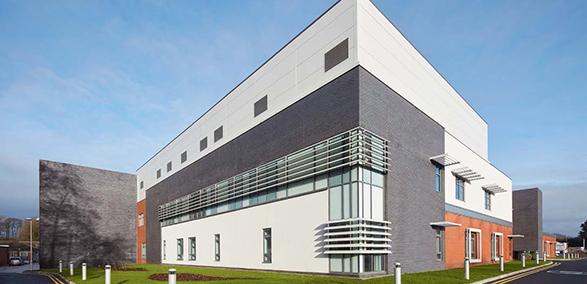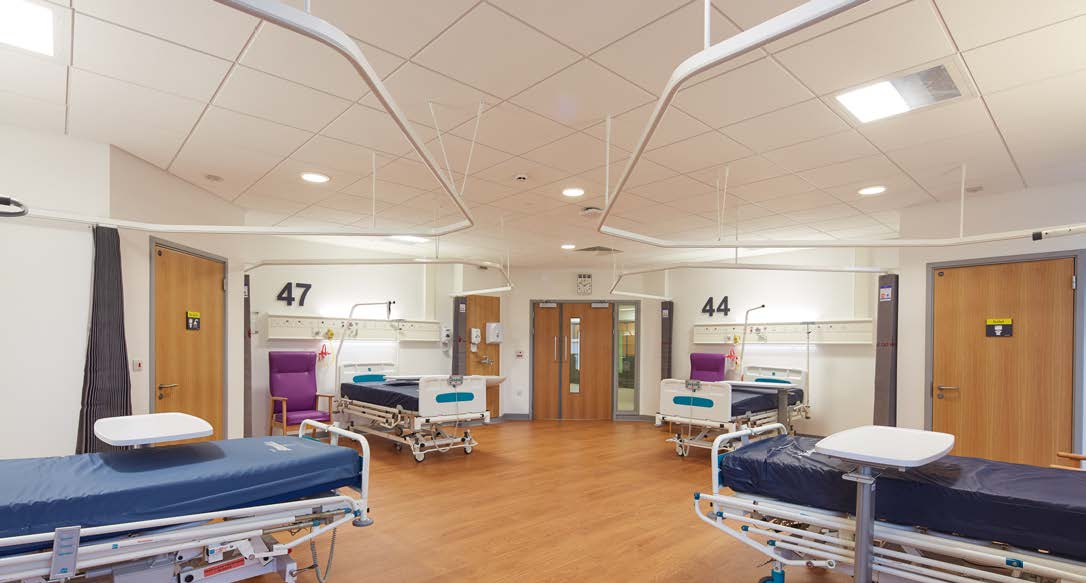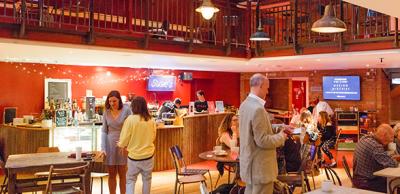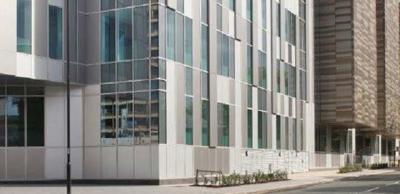Case study: Wrightington Hospital
Client: Wrightington, Wigan and Leigh NHS Foundation Trust
Main contractor: Integrated Health Projects, Vinci Construction
Sub-contractor: NG Bailey Ltd
Architect: IBI Group
LABC team: West Lancashire Borough Council
Project summary
The new £14.6m two-storey building at Wrightington Hospital includes two 28 bed post-operative wards, an innovative four bay orthopaedic ‘Barn Theatre’, an admissions unit and a recovery unit. This modern facility enhances patients’ post-operative recovery and ensures that the hospital remains a centre of excellence in orthopaedics.
Client
Wrightington, Wigan and Leigh NHS Foundation Trust, which is part of the NHS, is an acute Trust serving the over 300,000 population of the Borough of Wigan.
BC team
The Building Control team at West Lancashire Borough Council had two pre-submission meetings with the architects from IBI Group to discuss ideas and solve problems before they checked the detailed plans. Site inspections were carried out by the LABC at West Lancashire Borough Council.
Key issues
The designs for this Procure21+ scheme were produced using BIM Level 2. This provided an enhanced means of communication between the project team and informed the hospital’s facilities management team of the ongoing maintenance requirements.
This was a working hospital so construction had to be carried out with minimal impact on the daily running of the hospital. An access road was built which diverted construction traffic away from the hospital’s main entrance. The road is now used as a service route by the hospital, freeing up parking space.
Unexpected
Discussions took place regularly during design and construction stages so problems were identified and addressed at an early stage. At the beginning of the construction phase, a geotechnical engineer was employed to confirm the general geology of the ground. The Building Control team witnessed the excavation of trial holes so that they could advise on foundation levels, based on their experience and knowledge of the local geology.
Building Control inputs
The project team began working with the LABC team at West Lancashire Borough Council at RIBA Stage 2 before detailed drawings were produced and this helped the NHS Foundation Trust produce a fully compliant, high quality and cost effective building. Continual communication and liaison via client and Design Team Meeting workshops ensured the project was delivered as design, in advance of expected construction programme, and met the Trusts’ requirements.
Features of note
The original design included four separate operating theatres, however the design team challenged conventional thinking and provided evidence that clinical efficiencies could be achieved by having a ‘Barn Theatre’ where four operations could be carried out at the same time. This reduces the cost of each operation and enables more operations to take place thus increasing patient throughput.
The 56 bed post-operative ward is made up of single en-suite rooms and four bed cruciform configurations. The client adopted the use of ‘repeatable rooms’ in line with the Department of Health’s cost reduction programme selecting single en-suites and four bed clusters. The building is energy efficient and easy to maintain because of the emphasis on simplicity, quality, reliability and resilience.
At concept stage, the use of BIM enabled the project team to make informed decisions about the design of the building and the services in it, looking at U values, G values, Solar Shading and systems and working together to provide an economic and environmentally efficient scheme. The building was awarded a BREEAM ‘very good’ rating. By using BIM Level 2 all assets could be tagged and the Trust’s Facilities Management Team found this very useful.
What did LABC add?
The early involvement of Building Control and the collaborative nature of working during the construction phase provided a great benefit to the project, ensuring full compliance and a high quality build. During the initial stages of the build, Building Control visited the site daily to check the foundations and drainage but these reduced to weekly when they reached the internal fit-out stage.
Design team meetings, strong relationships and good communication between all parties ensured that the ‘as built’ project was true to the original design, delivered five weeks ahead of the planned handover.
Do you need building control guidance for your complex healthcare project? Get in touch!
Sign up to the building bulletin newsletter
Over 48,000 construction professionals have already signed up for the LABC Building Bulletin.
Join them and receive useful tips, practical technical information and industry news by email once every 6 weeks.
Subscribe to the Building Bulletin





Comments
Ychwanegu sylw newydd